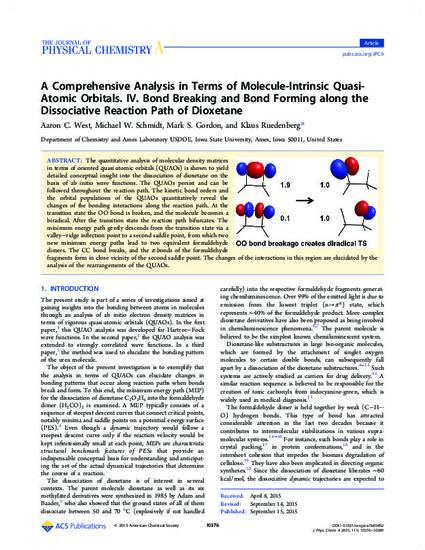
The quantitative analysis of molecular density matrices in terms of oriented quasi-atomic orbitals (QUAOs) is shown to yield detailed conceptual insight into the dissociation of dioxetane on the basis of ab initio wave functions. The QUAOs persist and can be followed throughout the reaction path. The kinetic bond orders and the orbital populations of the QUAOs quantitatively reveal the changes of the bonding interactions along the reaction path. At the transition state the OO bond is broken, and the molecule becomes a biradical. After the transition state the reaction path bifurcates. The minimum energy path gently descends from the transition state via a valley–ridge inflection point to a second saddle point, from which two new minimum energy paths lead to two equivalent formaldehyde dimers. The CC bond breaks, and the π-bonds of the formaldehyde fragments form in close vicinity of the second saddle point. The changes of the interactions in this region are elucidated by the analysis of the rearrangements of the QUAOs.
Available at: http://works.bepress.com/mark_gordon/336/

Reprinted (adapted) with permission from Journal of Physical Chemistry A 119 (2015); 10376, doi:10.1021/acs.jpca.5b03402. Copyright 2015 American Chemical Society.